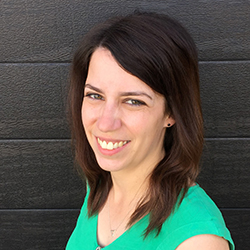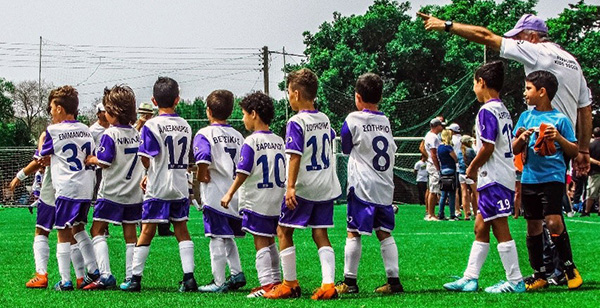
Number understandings in the early years
The development of number understandings is one of the most important aspects of mathematics in early childhood because early number understandings assist children in learning more complex mathematical ideas (Sarama & Clements 2009). Number refers to values expressed by words or symbols used to represent a quantity of something (MacDonald 2018). Infants are able to represent and remember quantities of up to three or four, distinguish between quantities, match small sets of objects, and notice changes in quantities (Geary 1994; Montague-Smith & Price 2012). These skills become more advanced during the toddler years, and children soon learn to use counting words and connect these words to sets of objects (MacDonald 2018). Recent research has confirmed the positive effects of pre-school education on children’s object counting, numeral recognition, and number order abilities (Rajagopal, Vandecruys & De Smedt 2022).
Recognising whole numbers
There are many aspects of number understandings, but a critical element is the recognition of whole numbers, also known as natural numbers. Whole numbers are positive numbers, including zero, i.e. 0, 1, 2, 3, and so forth. This means that fractions or decimals are not whole numbers.
Children are exposed to whole numbers from a very young age. Think about the way whole numbers appear in children’s songs like ‘Five Little Ducks’ or ‘One, Two, Buckle My Shoe’. Children often recognise whole numbers that have personal significance, such as their age or house number (MacDonald 2018). Children hear and use the language of whole numbers in their everyday play and activities, for example, ‘two biscuits for you’. Children can explore written numbers in their environment, such as on calendars, clocks, and labels, and begin writing numbers for their own purposes.
Learning how whole numbers can be used
It is important for children to learn that numbers can be used in different ways and for different purposes. Three important number uses to learn about are cardinal numbers, ordinal numbers, and the nominal use of numbers (MacDonald 2018).
Cardinal numbers are used to label ‘how many’ in a set. This basically means knowing that the word ‘three’ represents the quantity of ‘three’.



Ordinal numbers are used to explain the position of something in an order. Numbers have a sequential relationship; that is, ‘three’ occupies a place in a sequence that is one more than ‘two’ and one fewer than ‘four’ (Montague-Smith & Price 2012). We use ordinal words to show the position of something relative to another, for example, ‘first’, ‘second’, ‘third’. 
Nominal numbers are used as names or labels to help us identify things. However, there may not be a link between the nominal number name and its cardinality or ordinality. For example, just because a bus is called ‘the number 13 bus’ doesn’t necessarily mean that there is anything ‘thirteen-ish’ or ‘thirteenth’ about it (Montague-Smith & Price 2012). 
Exploring number in the kindergarten context
Exploring number through counting and recording quantities using writing and symbols are significant learning areas in the Queensland kindergarten learning guideline (QKLG). Within these learning areas, children build their skills in exploring and talking about how and when they use numbers. They also experiment with different ways to represent numbers, including written and visual representations. This provides opportunities for children to distinguish written numbers from other symbols.
Educators can help children explore number words and their representations, including symbols, purposefully when they explain the numbers and make connections in everyday contexts. For example:
- Notice how numbers are used in songs and nursery rhymes. Do the numbers represent a quantity (e.g. ‘Five Little Ducks’), a sequence (e.g. ‘One, Two, Buckle My Shoe’), or something else?
- Pay attention to the use of numbers in storybooks. Are the numbers cardinal (e.g. A Kunwinjku Counting Book by Gabriel Maralngurra), ordinal (e.g. 10 Little Rubber Ducks by Eric Carle), or nominal (e.g. The Field by Baptiste Paul and Jacqueline Alcantara)?
- Use incidental opportunities to explore numbers. For example, what number systems can be found around the kindergarten? How are they used in displays, routines or room organisation? In what ways do you use numbers in your talk and writing with children?
- Look for ways to consolidate the ideas about number you explore throughout the day. For example, you might point out the use of numbers in a room display, and then help children to use number representations in their play.
- Explore opportunities to notice cardinal, ordinal, and nominal numbers in outdoor environments. Have a look around your kindergarten’s yard, a local park or street — what do you notice about the signage? What information is shared through the use of numbers?
Points for reflection:
- How do I engage and support children to learn about number words, symbols and purposes?
- What opportunities do I provide for children to experience using different numbers in a variety of contexts and environments?
- How do I assess and document children’s understandings and use of number in meaningful situations?
- What opportunities do I have to include number understandings in routines and transitions?
Read more about exploring number.
This article is also available as a PDF.
References
Geary, DC 1994, Children’s Mathematical Development: Research and practical applications, American Psychological Association, Washington, DC.
MacDonald, A 2018, Mathematics in Early Childhood Education, Oxford University Press, South Melbourne.
Montague-Smith, A & Price, AJ 2012, Mathematics in Early Years Education, 3rd edn, Routledge, New York.
Rajagopal, AA, Vandecruys, F & De Smedt, B 2022, ‘The effects of preschool and age on children’s early number skills’, Cognitive Development, vol. 63, https://doi.org/10.1016/j.cogdev.2022.101227.
Sarama, J & Clements, DH 2009, Early Childhood Mathematics Education Research: Learning trajectories for young children, Routledge, New York.


